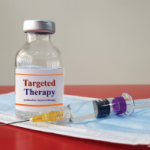“I was a lucky person because I was working in an environment of outcome measures,” Dr. Dougados now says of his time with Dr. Amor’s department. “What impressed me and was new for me was the fact that he was raising the right question at the right time in a very, very simple way. As soon as you raise the question in a very simple way, everybody is able to understand. And he was intelligent enough to accept that he was not able to answer all your questions, but he was, every time, asking the young students to argue, and to ask him ‘why, why, why?’ such as a child does. That was fantastic for me. I then understood that by doing this reasoning, you improve dramatically the way you look at the patient and at the disease. And so I was taught within the department of Bernard Amor in terms of standardized operating procedures: using the criteria to make a diagnosis, using the criteria to monitor your patients.”
Going International
After completing his medical training, Dr. Dougados joined Dr. Amor’s department as an assistant professor. Dr. Amor was already known for the development of criteria for spondylarthritis (SpA), which he had not published. Attending European and American meetings, Dr. Dougados believed that the discussions about SpA would benefit from Amor’s template. He urged his mentor to publish the criteria, and organized a meeting with top European SpA experts. “My main objective [in organizing the meeting] was to convince the key European opinion leaders to validate the criteria of Bernard Amor, and I failed,” Dr. Dougados says. Although his initial mission did not succeed, out of the meeting grew the resolve to conduct a study to elaborate new criteria for SpA. The genesis of the European Spondyloarthritis Study Group (ESSG) was Dr. Dougados’ first personal experience as an international study coordinator. The study yielded new SpA criteria, published in Arthritis & Rheumatism, ironically right around the time that Dr. Amor’s published criteria appeared.1
Soon after that, Dr. Dougados encountered Désirée van der Heijde, MD, PhD. Currently a professor of rheumatology at Leiden University Medical Center in the Netherlands and a senior researcher at Diakonhjemmet Hospital in Oslo, Norway, Dr. van der Heijde was then (about 1993) transitioning back to academia after working in the pharmaceutical industry. “The first really big project we did together was the OASIS cohort, an important investigator-initiated study,” she recalls. Since that time, the two have worked together frequently, publishing multiple papers from their collaborative group’s work.2 Dr. Dougados was among the first ASsessment of Ankylosing Spondylitis (ASAS) group steering committee members in 1995. Dr. Dougados has always been a plus in any collaborative situation, Dr. van der Heijde says. “He’s very creative, always full of ideas, persistent, very systematic, always in a good mood, and able to bring people together—mostly by his natural charms.”
